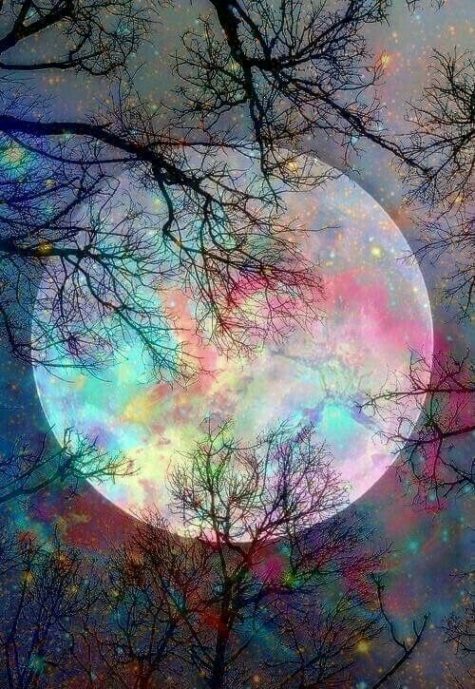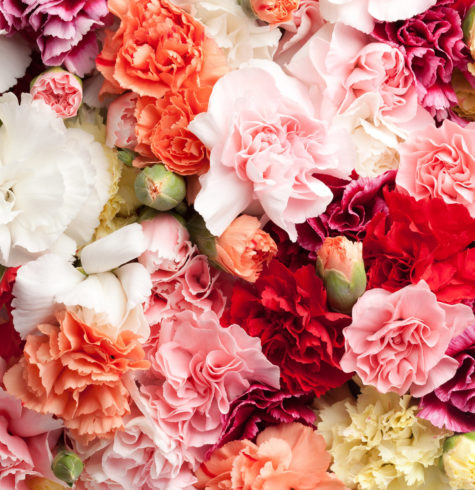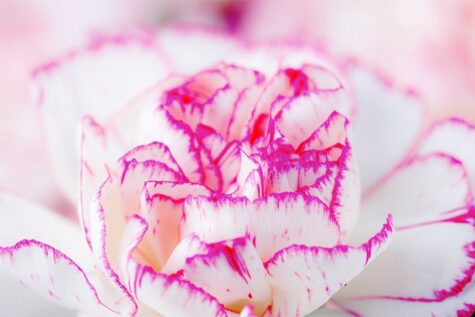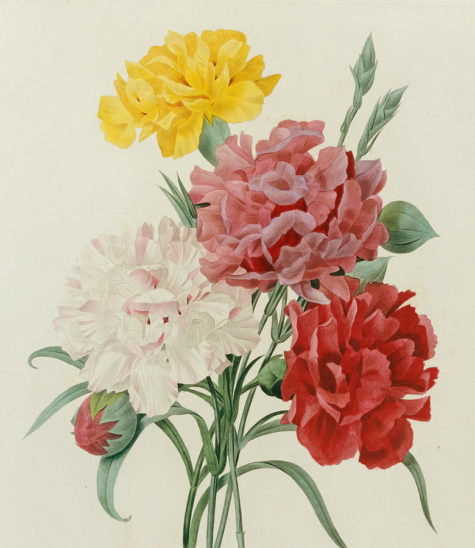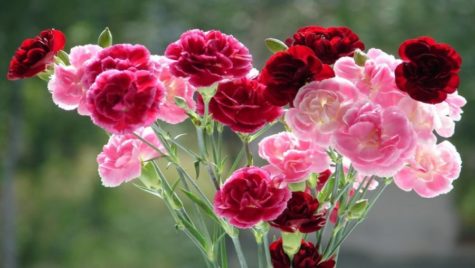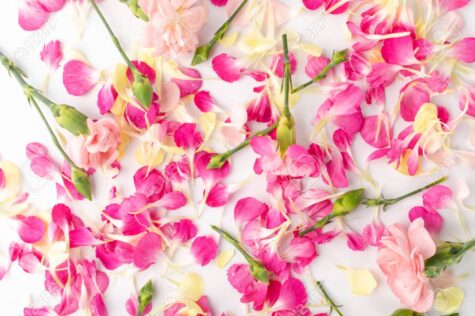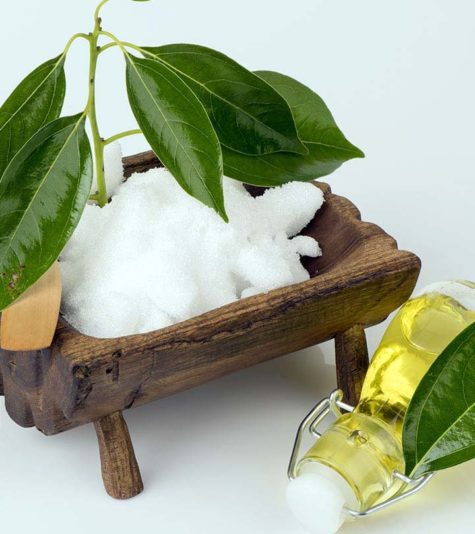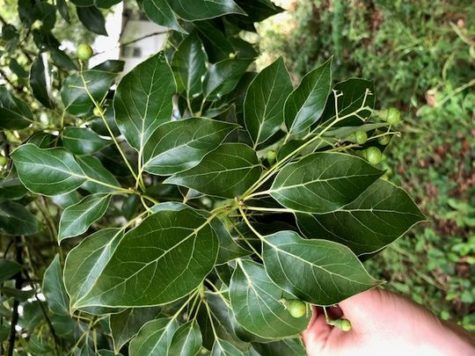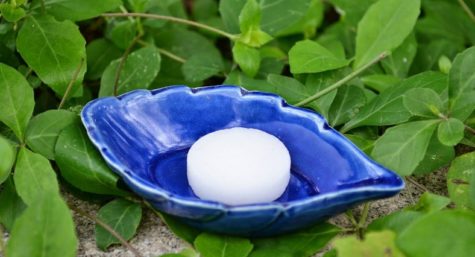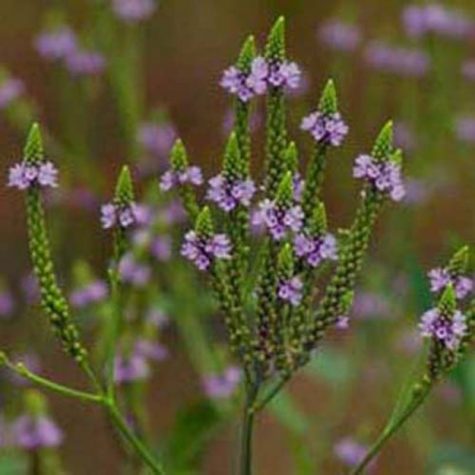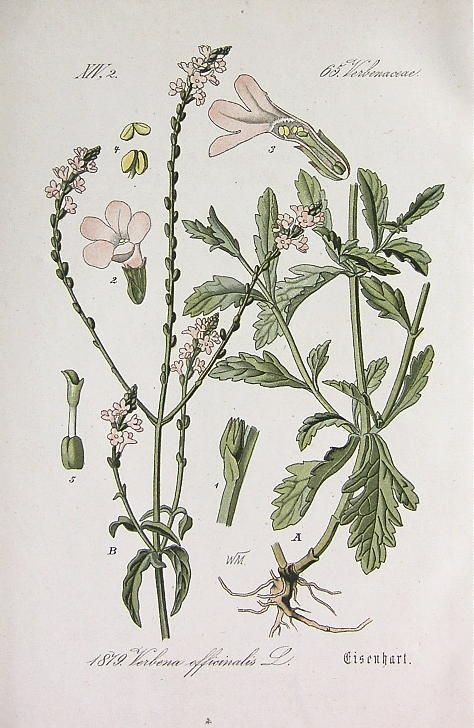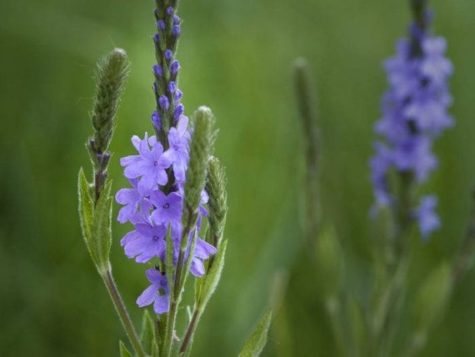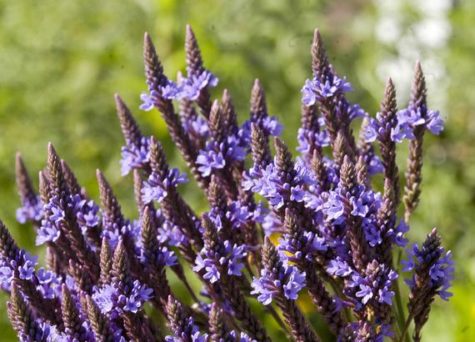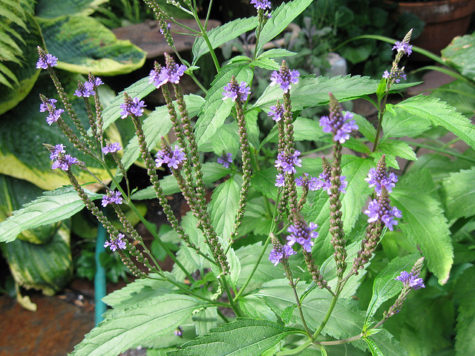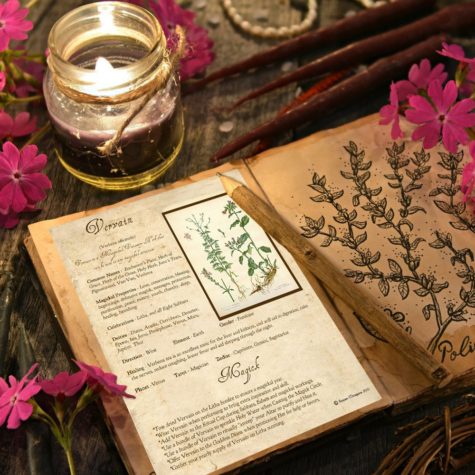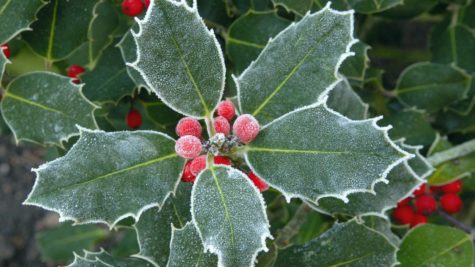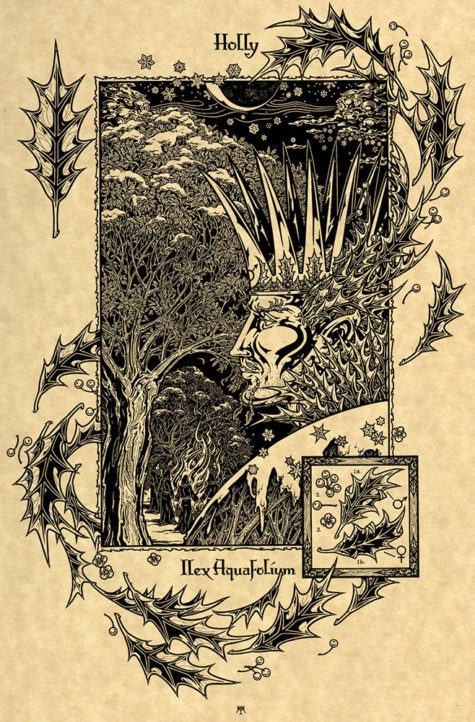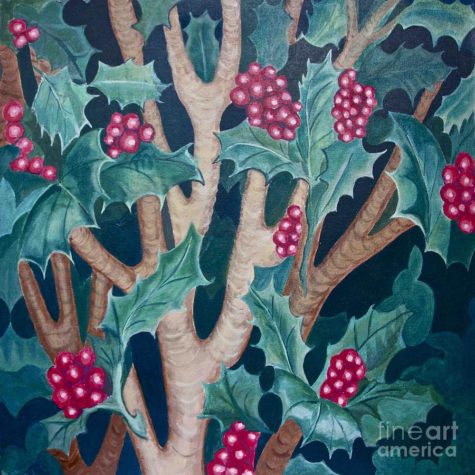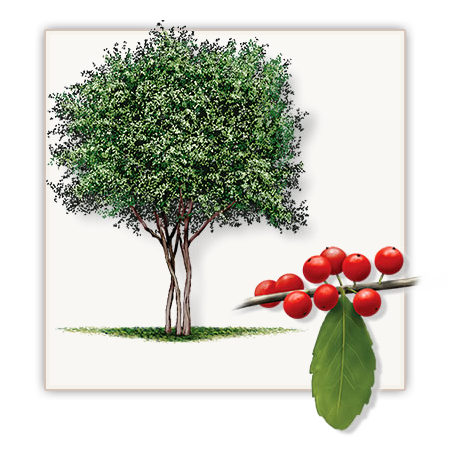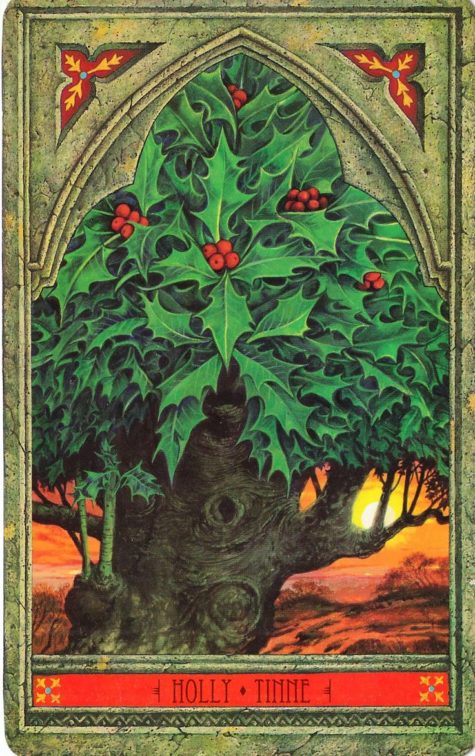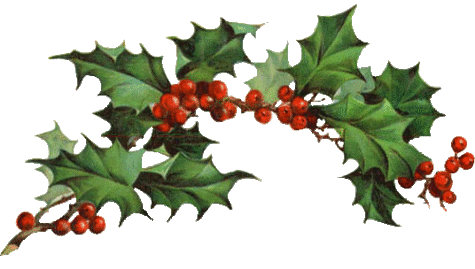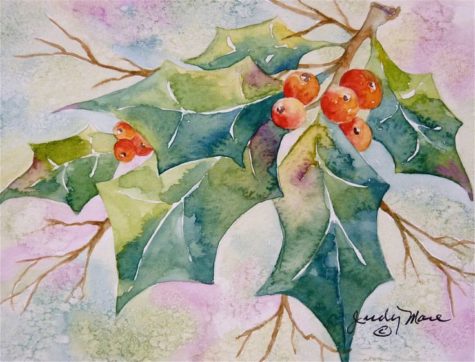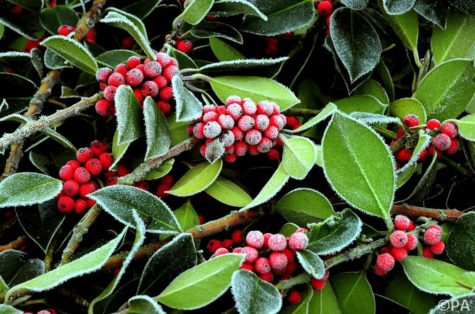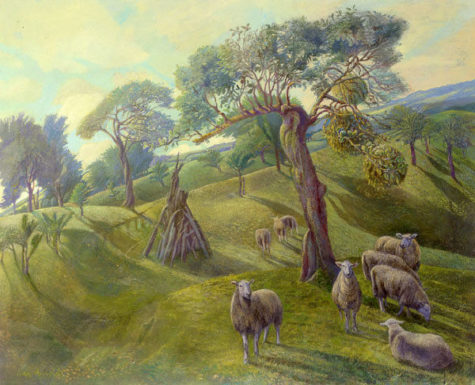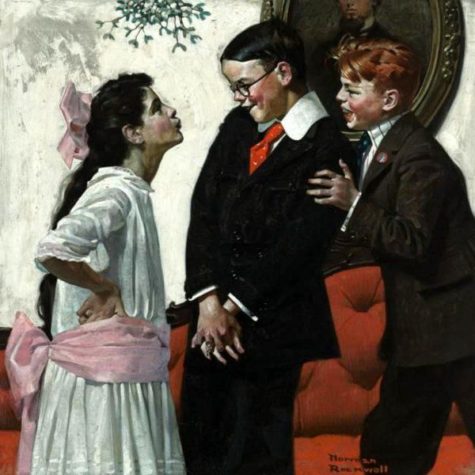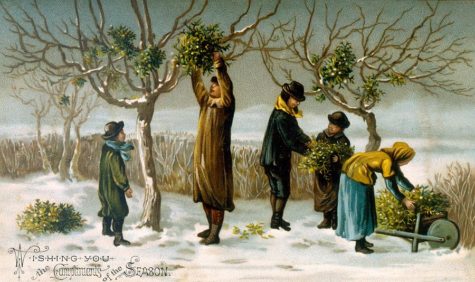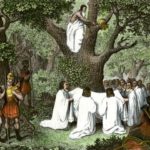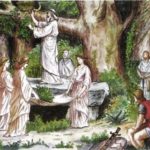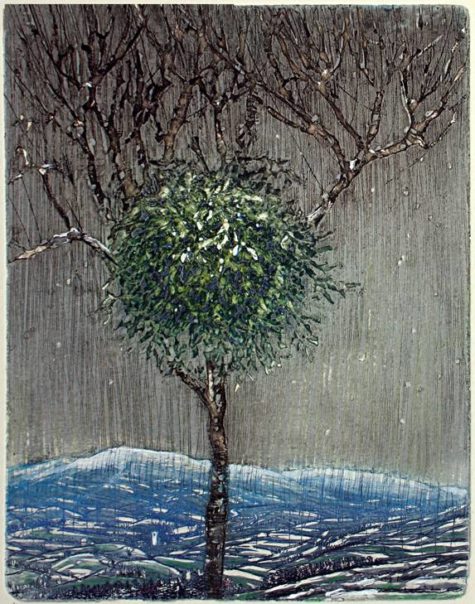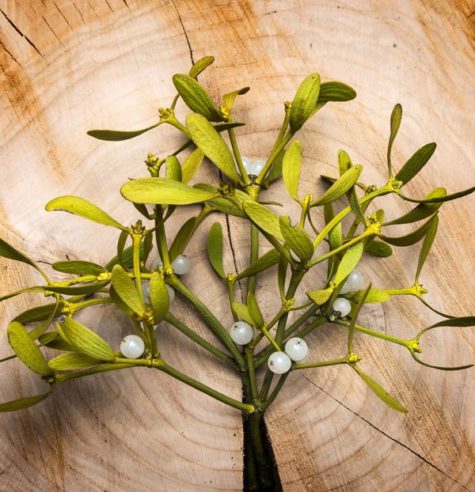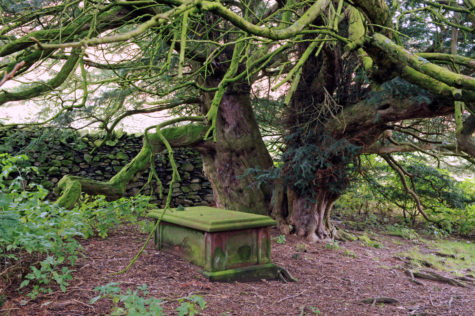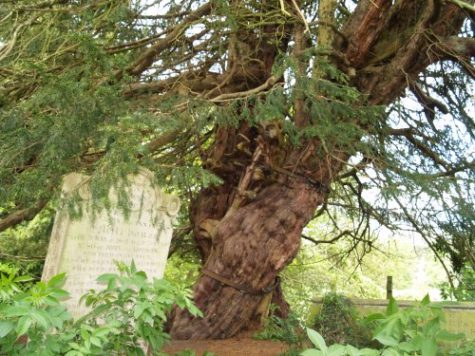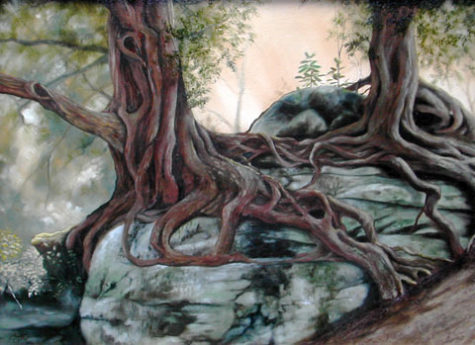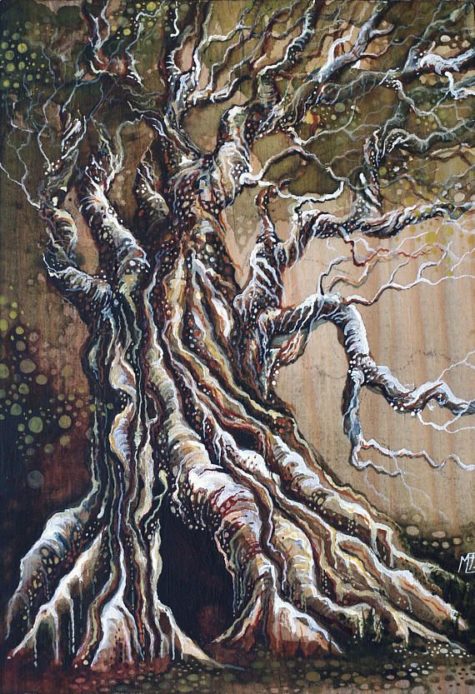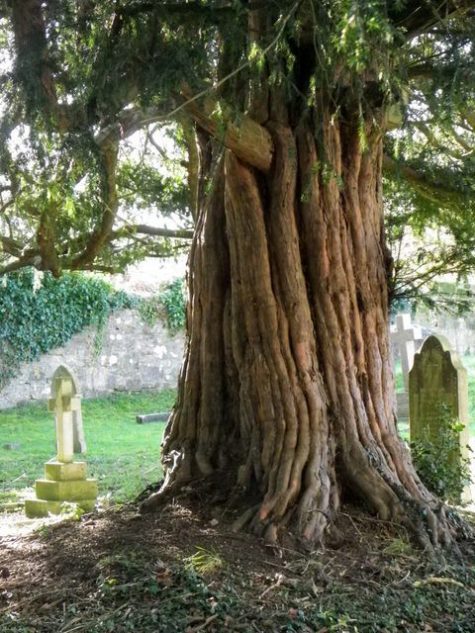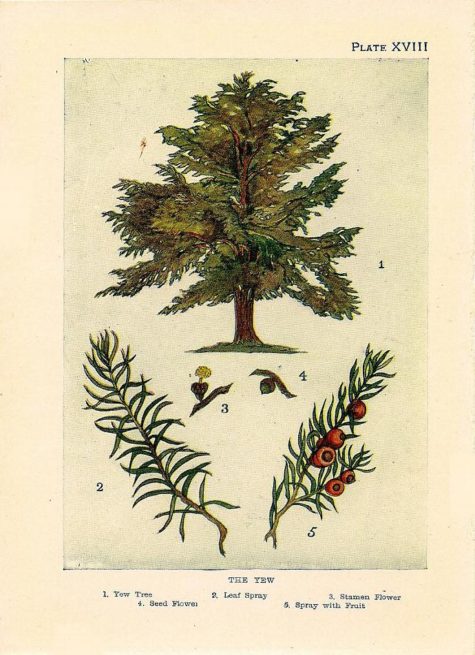Like the Sun, the Moon continually moves through the Zodiac, and each sign has its own significance. The Moon enters into the next zodiac sign approximately every two to three days. It is not uncommon for the Moon to enter all twelve signs within the month. Some months the moon will enter into the zodiac signs fourteen times, however, the norm is thirteen times per month.
If you are not sure what sign the moon is in, you can check the Pagan Calendar to figure out the moon signs, moon phases, and quite a lot more.
Bear in mind that magickal workings for gain, increase or bringing things to you, should be initiated when the Moon is Waxing (from Dark to Full); when the Moon is Waning (from Full to Dark), it is time for magical workings of decrease or sending away. The highest energy occurs at the Full Moon and, therefore, this is the most powerful time for magical workings. The New Moon is the next most powerful time for Magic.
- Moon in Aries ~ Action, Enthusiasm
Good for starting things, but lacks staying power. Things occur rapidly, but quickly pass. Best for spells involving authority, willpower and rebirth.
- Moon in Taurus ~ Renewal, Sensuality
Things begun now last the longest, tend to increase in value, and become hard to alter. Best for spells involving love, real estate, and money.
- Moon in Gemini ~ Communication, Curiosity
Things begun now are easily changed by outside influence. Best for spells involving communication, public relations and travel.
- Moon in Cancer ~ Emotion, Nurturing
Pinpoints need, supports growth and nurturance. Best for spells involving domestic life and honoring lunar deities.
- Moon in Leo ~ Vitality, Determined
Showmanship, favors being seen, drama, recreation and happy pursuits. Best for spells involving power over others, courage, child birth.
- Moon in Virgo ~ Organizing, Studious
Favors accomplishment of details and commands. Best for spells involving employment matters, health and intellectual matters.
- Moon in Libra ~ Balance, Cooperation
Increases self-awareness, favors self-examination and interaction with others. Best for spells involving court cases, partnerships and artistic matters.
- Moon in Scorpio ~ Sexual, Philosophical
Increases awareness of psychic power. Ends connections. Best for spells involving secrets, power and psychic growth.
- Moon in Sagittarius ~ Independent, Honest
Encourages flights of imagination and confidence. Best for spells involving publications, sports and the truth.
- Moon in Capricorn ~ Authority, Ambitious
Increases awareness of the need for structure, discipline. Best for spells involving career, political matters and ambition.
- Moon in Aquarius ~ Innovation, Social
Favors activities that are unique and individualistic. Best for spells involving science, freedom, personal expression, problem solving and friendship.
- Moon in Pisces ~ Sensitivity, Idealistic
Energy withdraws from the surface of life, hibernates within, secretly reorganizing and realigning. Best for spells involving music, telepathy and clairvoyance.
Important note:
This does not mean that spells must only be cast during those specific times. These are simply guidelines for optimal times, a spell can be cast whenever it is needed.
Source unknown
- Folkname: Gilliflower, Jove’s Flower, Nelka
- Type: Flower
- Ruler: Capricorn, Saturn
- Planet: Sun
- Element: Fire
- Magickal Form: Fresh, dried, essential oil
- Basic Powers: Protection, Energy, Happiness
Inhaling the gorgeous scent of the carnation flower will immediately enhance emotions of joy and happiness, so the addition of the essential oil is perfect for incenses and oils to dispel depression and disappointment. Brush flowers down your body to cleanse. After reaching the feet, break the stems to trap and hold the negative energy. This flower also helps relieve the depression of winter.
Keep red carnations on the altar to increase your energy level and to create more optimism in life. Once worn by Witches to prevent untimely death on the scaffold, it is used in power incenses and placed on the altar to produce added energy.
Dry nine red carnations in the Sun, crumble them and separate from the stems. Pour one dram carnation essential oil over them, mix well and smolder on charcoal for a tremendously powerful incense. Produces tons of energy!
Used to remove hexes and negative energy, the carnation is especially good for clearing out love problems. Add white and red carnations or essential oil to bathwater to stabilize your love life. Carnation flowers attract abundance as well, either as a bouquet or in a formula.
Including carnations or carnation oil in a blend for the sickroom is perfect to aid in the mental aspects of healing. If your eyes are bothered, rub them with red carnations – it will help. This belief comes from the biblical legend in which carnations sprang up where the Mother of Jesus’s tears fell as she cried over her son’s crucifixion.
Carnations have a history of being brewed into tea to help reduce stress and restore energy. Carnation tea has also been used to reduce fever and treat stomach aches. In addition to tea, carnation oil is used in beauty products to moisturize skin, minimize wrinkles, and treat skin conditions.
Magickal Carnation Aromatherapy
Raised in hothouses stretched along the Pacific coastline and grown across the border in Mexico, Carnations pop up everywhere and are available all year at fairly reasonable prices. The vast majority of these flowers are, however, useless for magickal aromatherapy.
As has been the case with the rose, carnations have been hybridized to produce the biggest bloom size, longest stems and brightest colors. The scent has been forgotten. Thus most carnations obtained from florist shops are virtually scentless. The red ones are an exception, but even here the spiciness is slight.
So what can you do if you wish to utilize the intriguing energies within carnations? Get yourself some starter plants and grow your own. What better way to ensure that you have a steady supply of these fabulous blooms? Look for short-stemmed red varieties with the heaviest fragrances.
These flowers, which Gerard said have an “escellent sweet smell,” are also smelled, with proper visualization, to bring a spicy love into your life.
Before a potentially exhausting magickal act, inhale the rich aroma of fresh carnation flowers. Accept the flower’s energy into yourself. Add it to your physical store of power which will soon be released from the body during magick.
When you’re suffering through a cold or some other minor illness, keep carnations around your sickbed. Inhale their odor while visualizing yourself in a healthy, healed state. If friends wish to give you flowers, you can always ask for carnations – even commercially grown ones.
The Sign of the Carnation
If you were born between December 22 and January 21, you were born under the sign of the Carnation. Those with the carnation flower sign are beautifully adept at putting things in order, and organizing. You are strong willed and determined for others to see your point of view.
You are a natural leader, and others look to you to lean on. You can be driven and determined and this makes you a strong personality. You are no stranger to hard work, and you like to get things done your way. You like security, particularly if you are building a comfort zone with your own two hands.
Carnation Symbolism
- Carnations are the traditional first wedding anniversary flower.
- Carnation is the birth flower for those born in the month of January.
For the most part, carnations express love, fascination, and distinction, though there are many variations dependent on color.
- Green colored carnations are associated with St. Patrick’s Day.
- The pink ones stand for a mother’s eternal love.
- Light red carnations represent admiration.
- Dark red denotes deep love and affection.
- White carnations represent pure love and good luck.
- While striped (variegated) carnations symbolize regret that a love cannot be shared.
- Purple carnations symbolize untrustworthiness.
Carnation symbolism around the world:
- Carnations native to the Near East, symbolize bonds of affection and love, health and energy.
- In Portugal, bright red carnations were used when in 1974 the authoritarian Estado Novo regime was overthrown; therefore, this transition is known as the Carnation Revolution.
- White carnations, in the Netherlands are associated with HRH prince Bernhard. He wore one during World War II and in a gesture of defiance some of the Dutch population took up this gesture. After the war the white carnation became a sign of the Prince, veterans and remembrance of the resistance.
- In France, the purple carnation is a traditional funeral flower, given in condolence for the death of a loved one.
- Along with the red rose, the red carnation can be used as a symbol of socialism and the labor movement, and historically has often been used in demonstrations on International Workers’ Day (May Day).
- According to a popular belief in Russia, white carnations may take away your talent and good luck. Those who want to present a performer on stage with flowers should avoid white carnations. On the other hand, placing a white carnation under the pillow will awake you inspired next morning.
According to a Christian legend, carnations first appeared on Earth as Jesus carried the Cross. The Virgin Mary shed tears at Jesus’ plight, and carnations sprang up from where her tears fell. Thus the pink carnation became the symbol of a mother’s undying love.
Carnation Story and Origins
Carnations are also called pinks because of their spiky petals that look like they were cut with pinking shears. There are several theories about how the carnation got its name. Some believe that it comes from the word coronation because it was used in Greek ceremonial crowns. Others think that it originated from the Latin word carnis, meaning flesh, because early carnations were typically pink.
Carnations scientific name is Dianthus caryophyllus. Some believe the name Dianthus originated from the myth of Diana. There are a few variations of this story. In one variation Diana, goddess of the hunt, was returning from an unsuccessful hunting trip. She stumbled upon a shepherd playing a flute and blamed his music for spoiling her hunting.
In a fit of rage she attacked him and plucked out his eyes. Once she cooled down, she regretted her actions. Where the eyes fell, red carnations grew as signs of innocent blood.
Others believe that Dianthus was named after Zeus, as Zeus in Greek is dios and flower is anthos. Carnations are also referred to as the flower of the gods.
Carnation Holidays and Events:
Red carnations are worn on May Day as a symbol of socialism and the labor movement in some countries, such as Austria, Italy, and successor countries of the former Yugoslavia. The red carnation is also the symbol of the Portuguese Carnation Revolution.
January 29th is National Carnation Day, also known as Red Carnation Day, this day honors the memory of President William McKinley. The carnation was said to be McKinley’s favorite flower, and he always wore one in his lapel. The Columbus, Ohio Statehouse often commemorates by giving discounts at the museum shop for individuals wearing red carnations or dressed in scarlet.
Carnations are often worn on special occasions, especially Mother’s Day and weddings. In 1907, Anna Jarvis chose a carnation as the emblem of Mother’s Day because it was her mother’s favorite flower. This tradition is now observed in the United States and Canada on the second Sunday in May. Ann Jarvis chose the white carnation because she wanted to represent the purity of a mother’s love. This meaning has evolved over time, and now a red carnation may be worn if one’s mother is alive, and a white one if she has died.
In Korea, carnations express admiration, love and gratitude. Red and pink carnations are worn on Parents Day (Korea does not separate Mother’s Day or Father’s Day, but has Parents Day on 8 May). Sometimes, parents wear a carnation corsage on their left chest on Parents Day. Carnations are also worn on Teachers Day.
Green carnations are for St. Patrick’s Day and were famously worn by the Irish writer Oscar Wilde. The green carnation thence became a symbol of homosexuality in the early 20th century, especially through the book The Green Carnation and Noël Coward’s song, “We All Wear a Green Carnation” in his operetta, Bitter Sweet.
In Poland, in times of the People’s Republic of Poland, carnations were traditionally given to women on the widely celebrated Women’s Day, together with commodities that were difficult to obtain due to the country’s communist system, such as tights, towels, soap and coffee.
At the University of Oxford, carnations are traditionally worn to all examinations; white for the first exam, pink for exams in between, and red for the last exam. One story explaining this tradition relates that initially a white carnation was kept in a red inkpot between exams, so by the last exam it was fully red; the story is thought to originate in the late 1990s.
But Wait – There’s More:
Carnations have inspired many artists, poets, and authors. British composer Joseph Mazzinghi wrote a song entitled “Ye Shepherds Tell Me”, which told of a beautiful girl wearing a wreath of flowers.
A wreath around her head,
Around her head she wore,
Carnation, lily, lily, rose,
And in her hand a crook she bore,
And sweets her breath compose.
Sources:
- Encyclopedia of Magickal Ingredients
- Gardenerdy
- The Herbal Alchemist’s Handbook
- Ftd.com
- Magical Herbalism
- Wikipedia
- Magical Aromatherapy
- Ruler: Moon, Buddha
- Type: Extract from tree
- Magickal Form: Oil, whole chunks
Note: Camphor is the resin of an Asiatic tree. It is a natural moth repellent and should not be confused with toxic naphthalene moth balls, which are merely scented with Camphor. When it comes to the essential oils, only essential oil of white camphor is safe for use.
Camphor is a substance frequently taken for granted. It’s used in many lotions and cosmetics because of the cooling sensation it provides. Camphor, botanically related to cinnamon, is considered a sacred lunar plant. In Marco Polo’s time it was bartered for with gold. It is one of the seven substances most sacred to Buddha and meditation upon it, or in its presence, will bring enlightenment.
Obtained from the evergreen tree, this fragrant white compound holds many spiritual properties. In voodoo rituals, it is burned for love and attraction. It is one of the most sacred substances to offer to the moon goddess on a new moon to thank her for her abundant blessings.
Camphor is also used in cleansing and purification rituals. White camphor oil added to the bath also clears the thoughts and soothes the soul.
Camphor allegedly reduces sexual desire. Use it to get rid of unwanted passions or unwanted admirers. Burn camphor or add one or two drops of essential oil of white camphor (other forms are toxic) to your bath when you need to cool off. Endeavor a would-be lover to smell camphor if he or she is forcing their attentions on you and you are not interested. It will instantly turn him or her off.
Burned on charcoal, Camphor is said to cleanse the home. It may be blended with other incenses for this purpose. The scent of burning camphor purifies a space and brings self-discipline, aiding in controlling and transforming bad habits. Long used in the Eastern Hemisphere for temple purification and protection, camphor is excellent for deep meditation and gaining insight. A little goes a long way, so if you burn camphor on charcoal, use only a small pinch.
Camphor resin is sold in small squares, four to a pack. Those who do not wish to burn incense place one square in each corner of a room, or crumble a single square into a bottle, cover it with Florida Water, and leave the bottle open to spiritually cleanse the room.
During the days of the polio epidemics, mothers hung camphor balls around children’s necks to ward away illness. This spell works under the same premises, except that what you’re warding off is the metaphysical virus of an unwanted romantic attention, or to ward off illness, negativity, or whatever you would like to repel.
Here’s how:
Dip a cotton ball in essential oil of white camphor and keep it in your pocket or tucked into a bra. Alternatively, you could hang it around your neck.
NOTE: Be sure not to use any other variety of camphor. Only essential oil of white camphor is safe for use.
Camphor is under the dominion of the moon. The lunar palace of Lady Chang’O is allegedly crafted from cinnamon wood, however both true cinnamon and camphor derive from trees of the Cinnamonium family. Maybe the Moon Lady’s palace was actually built from camphor wood.
Because of this connection, camphor can transmit some of the moon’s protective and luck drawing powers. Here’s how:
Charge spring water with lunar energies by filling a white, blue, or silver container with clear spring water and then leaving it in a windowsill or outdoors on a full moon night. The next day, dissolve a camphor square into the lunar-charged spring water.
Use this water to cleanse appropriate magical tools so that they may be used to fulfill your wishes and be imbued with the power of the moon.
NOTE: Be careful, camphor can also be toxic.
From:
- Element Encyclopedia of 5000 Spells
- The Encyclopedia of Magickal Ingredients
- The Herbal Alchemist’s Handbook
Witches know that ultimate Magick comes from the heart of nature. Forging a strong bond with nature by nurturing house plants is very empowering and can sort out your health too!
The top five plants all remove chemical vapors that build up in the home from paints, cleaners, solvents and other unhealthy things – and they have magickal abilities too as listed below:
- GERBERA DAISY Great to encourage happiness.
- PEACE LILY Encourages harmonious energies and good communication.
- BOSTON FERN Encourages psychic ability and intuition.
- ENGLISH IVY For protection and luck – especially good for newly weds.
- ARECA PALM (or Butterfly or Yellow Palm) For peace and creativity.
When you feel surrounded by negativity or weighed down by bad habits, use essential oils as follows:
- Lemon or sage for cleansing
- All citrus oils are especially good for stimulating creativity and giving your mind a fresh, clean slate to fill with positive thoughts.
- Thyme oil is also effective for an energy reboot.
- The calming, reassuring properties of lavender will help you stay on track with new, positive habits.
- Ruler: Venus, Celtic goddesses
- Type: Herb
- Magickal Form: Oil, Leaves, Powder
- Latin Name: verbena officinalis
This is one of the most sacred fragrances of the Welsh witches, who wore it or burned it to prepare the way for connection with the God and Goddess. Use Vervain in your protection, love, and immortality spells. Grown on the property, it brings blessings of prosperity to the household.
Take Vervain baths to prolong your life and renew hope. Dust your hands with the powder to make sure the one you love will love you back. When worn, it protects from nightmares and lightning. Use to attract wealth. Vervain is an excellent herb for artists; its use before any creative attempt or performances ensures success.
Burn pure Vervain (or mix with equal parts of frankincense) for a fantastic purification incense.
Great for magickal cleansing baths, purification incenses, and personal safety amulets. Best gathered at Midsummer. Hang up on the bed to keep you free of nightmares. Helps soldiers to escape their enemies. Bury in your fields to make the crops bountiful and profitable. Amulets are sometimes given to babies, for it is said to make its bearer a quick learner. Used in many love and protection sachets.
Juice of the Vervain is believed to suppress sexual desire for long periods of time, and is consumed by religious ascetics to make life a little easier. This same juice, if smeared on the body, will enable a person to see into the future.
Verbena vs Vervain
Vervain (Verbena Officinalis) is a flowering plant in the Verbena (Verbenacea) family of plants. Lemon verbena is actually an entirely different plant. Both Vervain and lemon verbena are in the same plant family, but there are many plants in the Verbena family. Not all are used medicinally in the same ways as Vervain.
Verbena actually means “altar plant” because of the use of bundles of twigs that were tied together and used to sweep altars.
Folk Names
- Juno’s Tears
- Herb of Grace,
- Pigeon’s Grass
- Enchanter’s Plant,
- Simpler’s Joy,
- Holy Herb
- Pigeonwood
- Herb of the Cross
- Verbena
- Herb of Enchantment
- Vervan
- Van Van
More About Vervain
The belief that Vervain is a holy and magickal herb is very old. In Norse mythology, it was sacred to Thor, and in ancient Persia to the sun. The Persians believed that people carrying it would receive friendship and affection from everyone they come across. It was called “tears of Isis” in ancient Egypt, and later called “Hera’s tears”. In ancient Greece it was dedicated to Eos Erigineia.
The Romans believed this herb was sacred to Mars, God of War, and so they also believed that Vervain would repel the enemy. Crowns of the herb were worn by envoys sent to other countries, whether they were there for peaceable purposes or otherwise. The ancient Romans also believed it promoted fertility, and kept it in their homes to ward off evil.
It was venerated by the Druids almost as much as mistletoe and, when gathered under the Dog Star with appropriate rites, was used by them for magickal and healing purposes. Vervain was so sacred to the Druids that anyone who picked one had to immediately place a honeycomb on the spot.
In Christian legend, it is said to have been first found growing under the Cross on Calvary, and to have been used to staunch the bleeding of Our Lord’s wounds. For this reason, it was sometimes called the Holy Herb, and was believed to have the power of averting evil of all kinds, arresting hemorrhage, and healing serious wounds.
It had, however, to be gathered with great care, curing certain phases of the moon and while repeating secret words or incantations. If this was not done, its full strength and virtues were lost. One method of gathering it is described in an Elizabethan manuscript kept in Chetham’s Library in Manchester:
The seeker went to the place where the herb grew and said,
All-hele, thou holy herb,
Vervain,
Growing on the ground;
In the Mount of Calvary,
There wast thou found.
Thou helpest many a grief,
And stanchest many a wound.
In the name of sweet Jesus
I take thee from the ground.
O Lord, effect the same
That I do now go about.
While actually plucking it, he said,
In the name of God,
on Mount Olivet
First I thee found.
In the name of Jesus,
I pull thee from the ground.
Vervain, like St John’s wort and dill, “hindered witches of their will,” and guarded its owner from the effects of overlooking and many other misfortunes. Nevertheless, it was sometimes said to be an “enchanter’s Herb,” and witches, if they were often defeated by it, were also supposed to use it in their spells.
In Hungary, it was beloved of thieves because, like moonwort in England, it has power over locks and bolts. If a man made a small cut in his hand and pressed a fragment of the leaf into it, that hand would afterwards be able to open any locked door or chest lid simply by touching it.
In Hoodoo and other folk magic traditions, Vervain is used to make Van-Van oil – this is simply a blend of Vervain and a base oil, simmered and strained. This oil is used to provide magical protection, and clear away evil energies.
The roots hung about a man’s neck when he went to bed kept away bad dreams, and a tea made from the leaves soothed nervous excitement and prevented insomnia. In the Supplement to the London Pharmocopaeia (1837) it is stated that a necklace of Vervain roots, tied with a yard of white satin ribbon, would help to cure the King’s Evil.
Marcellus of Bordeaux mentions a magickal remedy for a tumor in De Medicamentis (XV). A root of Vervain had to be cut in two, and one half had to be hung round the patient’s neck. The other was smoked in a fire. As it dried in the heat, so would the tumor dry up and vanish. A sinister rider to this receipt says that if it was desired to bring the tumor back again, all that was necessary was to throw the smoked portion into a abasin of water. As it swelled with the moisture,m the tumor would return.
It was also used in love-charms and aphrodisiacs. In Germany, a wreath made from Vervain was often presented to a bride on her wedding day, both to bring her good luck and to ensure the fertility of the marriage. In many forms of folklore, Vervain is associated with workings that decrease lust – however, the scent of Vervain is a well-known aphrodisiac. Another way to tap into the aphrodisiac qualities is to place a few seeds of Vervain into a small bag and wear it around your neck.
In addition to matters of the libido, however, Vervain is commonly incorporated as a cleansing herb. Vervain is the best ingredient to use to wash down an altar or temple before attempting magickal work. It charges the space with power and immediately raises the consciousness of all who enter the space. You can brew up a batch of Vervain water to cleanse your magical tools, asperge around a sacred space, or purify your altar for ritual.
You’ll need:
- 1 / 2 cup fresh Vervain leaves
- 2 cups boiling water
After your water has come to a boil, pour it over the Vervain leaves in a pitcher or bowl. Allow the leaves to steep for half an hour, and then strain. Use a funnel to pour it into a jar. Use the water for cleansing and purification.
Sources:
- Patti Wigington
- Encyclopedia of Magickal Ingredients
- The Encyclopedia of Superstitions
- Magical Herbalism
- Latin Name: Ilex aquifolium, Ilex opaca (American Holly)
- Celtic name: Tinne (pronounced: chihn’ uh)
- Known as: Tree of Sacrifice
- Folk or Common names: Holly, Aquifolius, Bat’s Wings, Christ’s Thorn, Holm Chaste, Hulm, Hulver Bush, Scarlet Oak, Kerm-Oak, Holy Tree
- Meanings: Holly actually means “holy”.
- Ruling Planets: Mars and Saturn
- Element: Fire
- Ruler: Sun
- Stone: Ruby, Bloodstone
- Birds: Cardinal, Starling
- Color: Red
- Deity: Lugh, Tannus, Thor, Danu
- Other: The Holly is an evergreen tree.
- Magickal Form: Wreaths, berries, leaves, wood
- NOTE: Holly berries are poisonous!
- Powers: Protection, Anti-Lightning, Luck, Dream Magick
Holly, being evergreen and having red berries, is a symbol of enduring life, and consequently it is considered a lucky plant almost everywhere. It is very unlucky to cut down a Holly tree.
The Holly Tree is one of the Seven Chieftain Trees of the Druids, its very name means “holy.” A Christian myth says that the blood of Christ formed the red berries of the holly. Holly is also associated with unicorns, since the unicorn is one of the Celtic symbols for this tree – the other symbol is the Flaming Spear.
Holly berries represent the blood of the Goddess. Use Holly berries with your favorite spell for female fertility and sexuality. Holly tames wild beasts and wards off storms and bad weather. Since it is a masculine herb, it brings good luck to men. The Romans considered Holly sacred and used it as a decoration during their Saturnalia celebrations.
Holly is sacred to the Winter Solstice, when it is used for decorating. Decorating one’s home with holly was believed to bring protection and good luck to the inhabitants in the coming year. Holly was used for decoration throughout homes with it being used for boughs over entrances to peoples’ homes or formed into holly wreaths that were hung on doors.
Sprigs of holly in the house at Christmastime will bring you good luck. But… be careful not to bring it indoors before Christmas Eve or your family will fall to squabbling. (Bet you wondered why that happened. grin…) Also be sure to burn it on 12th night (January 5th) or the good luck will turn sour.
Holly was the gift of good luck among the Romans celebrating their midwinter festivals. The northern tribes, who eventually brought about Rome’s downfall draped holly over doorways as shelter for friendly woodland spirits who could bring good luck to their houses.
The custom of bringing holly boughs into the home in the depths of winter has its origins in the original pre-Christian idea that its prickly leaves sheltered the fairy folk, who were delighted to come indoors at such a cold time of the year.
The wreaths are very popular around the Christmas / Yuletide season. Placing a ring of holly on doors originated in Ireland since holly was one of the main plants that was green and very beautiful with its red berries at this time of year and gave poor people a means of decorating their dwellings.
Unlike mistletoe, it appears in the Christmas Greenery of churches as well as ordinary houses. In some districts, when the rest of the decorations are burnt or thrown away at the end of the holiday, a holly-sprig is kept, to protect the house from lightning during the coming year.
- Planted near a house, holly repels negative spells sent against you.
- A bag of leaves and berries carried by a man increases his ability to attract women.
- Burn Holly leaves with Blessing Incense to protect the home and draw good luck.
- Place Holly above the door lintel for protection and to invite helpful spirits.
- Carry Holly berries in your pocket for protection.
The Holly tree (of which there are well over 150 species) can grow (albeit very slowly) to be as high as fifty feet and is native to most of Central and Southern Europe. Its white, star-shaped flowers bloom in the Spring and it bears shiny red berries in Autumn which last throughout the Winter season. The leaves of the Holly are shiny, dark green in color, elliptical in shape and have spiny points. In order to produce berries, both a male and a female tree are required. Only the female tree produces berries which, although lovely to look at, are poisonous.
Given its evergreen nature, the Holly represented immortality and was one of the Nine Sacred Woods used in Need-Fires (the others being Oak, Pine, Hazel, Juniper, Cedar, Poplar, Apple and Ash). In ancient Irish lore, it was also listed as one of the Noble Trees of the Grove (along with Birch, Alder, Willow, Oak, Hazel and Apple).
The Holly tree has a fine white wood which was once used in the making of inlays and for walking sticks as well as riding crops. Its leaves are a favorite food among deer and sheep during the Winter months. The wood of the Holly is hard, compact and beautifully white in color, being susceptible of a very high polish.
Magical History and Associations:
Each month of the Celtic Lunar calendar bears the name of a tree. Holly is the 8th Moon of the Celtic Year – (July 8 – Aug 4).
The Holly, a masculine herb, is associated with the element of fire, and is an herb of Saturn and Mars. The bird associated with this month is the starling, the color is green-gray, the gemstone is yellow caingorm, and the day of the week association is Tuesday. Holly is the first moon of the dark half of the year, and the Holly is sacred to both the Winter and Summer Solstices.
Summer Solstice is the time when in mythology, the Oak King is slain by his twin, or tanist, the Holly King, who rules until the Winter Solstice, when he in turn is slain by his tanist, the Oak King. Tanist is related to the tannin found in an Oak tree; Oak and Holly are two sides of the same coin, the end of one cycle and the beginning of the next.
Holly is one of the three timbers in the Chariot Wheel. It represents personal sacrifice in order to gain something of greater value.
The Holly is also sacred to the deities of Lugh, Habondia, Tina Etruscan and Tannus. There are special spirits that dwell within Holly trees: the Holly Man lives in the tree that bears prickly Holly, and the Holly Woman dwells within that which give forth smooth and variegated leaves.
Magickal usage:
The month of Holly is a good time to do magick designed to help bring about a successful harvest. The Holly has applications in magick done for protection, prophesy, healing, magick for animals, sex magick, invulnerability, watchfulness, good luck, death, rebirth, Holiness, consecration, material gain, physical revenge, beauty and travel.
Dreaming of Holly means you should be mindful of what is troubling you, and picking holly in your dreams means you will have a long life.
Holly also has the ability to enhance other forms of magic. As a symbol of firmness and masculine energy, Holly wood was used by the ancients in the construction of spear shafts, which were thought to then have magickal powers. Uses of Holly in protective magick includes hanging a sprig of Holly in the home all year to insure protection and good luck. Holly is also an excellent charm to wear for protection.
‘Holly Water’ can be made by soaking Holly overnight in spring water under a full moon. This water can then be sprinkled over infants to keep them happy and safe. Holly Water can also be used to sprinkle around the house for psychic cleansing and protection.
A “par excellence” protective herb, it protects against lightning, poison, and evil spirits. When thrown at wild animals it makes them lie down quietly and leave you alone. Holly leaves can be cast around outside to repel unwanted spirits or animals and a Holly bush can be planted close to houses to protect against lightning. Ensure that the Holly has a place in your garden because its presence wards off unfriendly spirits. Do not burn Holly branches unless they are well and truly dead, for this is unlucky.
Holly is considered the male counterpart to the female Ivy. Holly, intertwined with ivy, is traditionally made into crowns for the bride and groom at weddings/handfastings. Holly and Ivy also make excellent decorations for altars.
Holly is also a traditional decoration for Yuletide as in sung in the traditional Yuletide song:
“Deck the halls with boughs of Holly,
fa la la la la, la la la la.”
Even though Holly’s Yule festival greens are traditionally burned at Imbolg, a small sprig us kept for luck and to keep evil away throughout the year. Holly berries were used to predict winter weather. If there were a profusion of berries, that meant it would be a hard winter, because the Goddess was providing extra berries for the birds.
When harvesting the leaves from the Holly, remember to ask the tree if it will allow you to take the parts and be sure to leave the tree an offering of thanks when you are done. Holly favors red and yellow stones as gifts.
A north country charm to induce dreams of a future mate required the seeker to go out in silence at midnight on a Friday, and gather nine she-holly leaves (the smooth variegated variety). These had to be tied with nine knots in a three-cornered handkerchief, and laid under the pillow before going to bed. The future husband or wife would appear in a dream, but only if complete silence had been preserved from the moment of setting out to gather the leaves until dawn the next day.
The Deeper Meaning of Holly
It is during June that the light of the sun reaches its culmination, and then begins its descent into earth. The Holly speaks to the fierce capacity of the human soul to take the descent into the underworld, bringing inner light into darkness. Thus we can understand the signature of the tree, with its ability to germinate without sunlight, favoring dark, moist conditions that are more strongly related to the downward earth pole. Its stiff, pointed leaves are not unlike thorns or “spears.”
The Holly yields a hard, white close-grained wood that imparts a quality of solidity and impermeability, as it stands in the depths of winter, impervious to cold and darkness with its somber evergreen color.
The Druid initiates developed a sacred alphabet, called the Ogham, based upon the archetypal qualities of trees. The Holly, known in Gaelic as Tinne ruled the eighth moon of the year, or the month of June. The glyph for Holly is that of a spear, meaning literally, “I am a battle-waging spear.”
Of all the trees in the Ogham, the Holly and the Oak are most primordial—they are viewed as two “kings” who exchange leadership on a yearly basis by engaging in symbolic battle. The Gaelic name for Holly—Tinne—is related to the word, tanist, meaning “dark twin.” The Oak King rules from the time the light begins its ascent in December until the summer solstice in June. Holly is the “dark twin” who reigns during the waning light of the year, until winter solstice.
The Holly’s prominence at Christmas is actually meant to represent a culminating experience within the soul life. It is an awakening of the love forces of the heart achieved through a descent into the interior of the self and the earth that comes to fruition during this festival. This understanding is depicted in Rudolf Steiner’s Calendar of the Soul.
Steiner is a modern initiate who incorporated the mystery streams of earlier cultures, including Druidic wisdom. His calendar is a series of 52 runic verses for each week of the year. Beginning at summer solstice, the soul gradually finds its way into an interior reality, moving out of the great cosmic heights. The sense of self coalesces like a seed, with light working into the inmost being, as a purifying and strengthening force. Then, at winter solstice, this light is quickened and shines forth from the heart chakra:
To carry spirit light into
World Winter-night
My heart is ardently impelled
That shining seeds of soul
Take root in world ground
And the Holy Word resounds
Through the darkness of the senses
Transfiguring all life.
In subsequent winter verses Steiner describes this activity of the soul as a “heart-high gladness”. It is the inner light of Self-containment gained by living in “spirit depths”—at one with the “world ground.” The soul is so solidly secure and anchored within itself that nothing can assail one’s sense of deep peace. When this consciousness is mastered, the journey inward of the Self is complete. The heart awakens with a streaming of love, gradually seeking its way outward into the sense world again to meet the expansive forces of the light in spring and summer.
We could say that the Holly flower which blooms in outer nature in late spring/summer, blossoms again in the human heart during winter as a force of love. Its nature is a sun force that lives, not in the heights but in the depths of the earth.
Perhaps the most profound archetypal picture of Holly is evoked through its symbolism as the Crown of Thorns. As the traditional Christmas carol proclaims, Of all the trees that are in the wood, the holly bears the crown.
Druid priests wore Holly in their hair while collecting the sacred mistletoe medicine in the winter, Holly was also worn as a crown to represent the Holly King in seasonal festivals. The Holly Crown was a sign of deepest respect and recognition that such an initiate had mastered the forces of nature in harmony with the human soul.
The Holly tree came to be known as Christ-Thorn in middle Europe, for it was recognized that this plant spoke to the archetypal reality of the Crown of Thorns as a soul initiation. The Crown of Thorns is also a kind of “beheading.” The false self must be pressed down with a Crown of Thorns until it finds a deeper truth in the human heart. The “battle waging spear” is thrust not outside, but within.
Holly teaches us that we cannot find love outside ourselves, if it is not anchored from within the human heart. Holly creates what is divine from within what is human. Holly helps the human heart know its own wholeness; its own holiness.
Herbal usage:
The powdered leaves were brewed into a healing tea for measles, fevers, bladder problems and bronchitis, and the ashes from burning the leaves in a drink soothed whooping cough.
Hot compresses made from the leaves and bark helped ease the pain of broken bones and dislocations. The juice of the fresh leaf is helpful in jaundice treatment. Holly can be used homeopathically as a substitute for quinine.
Note: Holly berries are poisonous!
Holly Folklore and Superstition
Male, or prickly, holly is lucky to men, as the smooth variegated type, known as the she-holly, is to women. If the First Foot on his rounds brings evergreens with him, it is usually holly that he chooses, but in this case it must be the male kind, for the other variety, being female, would be very ill-omened.
Holly branches must never be burned when green. To do this is extremely unlucky, and may cause a death in the family. It is also unlucky in some places to stamp on a holly berry, or to bring the plant indoors when it is flowering.
A well-known country remedy for chilblains is to thrash them with a holly bush “to let the chilled blood out.” This probably does some good by restoring the arrested circulation, but the choice of holly rather than anything else as a thrashing agent is made for magickal reasons.
Sources:
- Holly The Heart Healer
- Encyclopedia of Magickal Ingredients
- dutchie.org
- Encyclopedia of Superstitions
According to the Celtic mythology of trees, Mistletoe is the tree of the day after the Winter Solstice (Aprox. December 23). In Druidic lore Mistletoe is an herb of the Winter Solstice and is the special plant for the day after Yule.
- Latin name: Viscum Album
- Celtic name: It is said that Mistletoe is too sacred to have a written word.
- Folk or Common names: Donnerbesen, Birdlime, All Heal, Golden Bough, Devil’s Fuge, Thunderbesom
- Parts Used: Leaves, berries, twigs
- Basic Powers: Protection, Love
Mistletoe is a plant of the sun and also of the planet of Jupiter. It is associated with the element of the air. The colors of Mistletoe are green, gold and white, and its herb is hyssop. The gemstones associated with Mistletoe are Black Quartz, Amber, Pearl and green Obsidian. Mistletoe has the immortal creature the Gryphon-Eagle associated with it and also the plain eagle is its bird association. There are many deities associated with Mistletoe: Loki, Blader, Hercules, Shu, Osirus, and Aeneas are a few of those deities.
Magickal usage:
Romans, Celtics, and Germans believed that mistletoe is the key to the supernatural. Mistletoe will aid and strengthen all magickal works but is best called upon for healing, protection, and beautiful dreams – dreams which will unlock the secrets of immortality. Mistletoe is a good wood to use for making wands, other ritual tools and magickal rings.
The Berries are used in love incenses, plus a few berries can be added to the ritual cup at a handfasting. Boughs of Mistletoe can be hung for all purpose protection around the house. Sprigs of Mistletoe can be carried as an herb of protection – plus amulets and jewelry can be made out of Mistletoe wood as protective talismans.
Hung over the cradle, Mistletoe will protect the child from being stolen by the fey and Mistletoe that is carried will protect the bearer from werewolves. Mistletoe stood for sex and fertility – hence our tradition of kissing under the mistletoe. It is traditionally hung in the home at Yule, and those who walk under it exchange a kiss of peace.
Pick on Midsummer’s Eve, or when the moon is six days old (six days after the New Moon). Wear as a protective amulet, or to help conceive. The wood is often carved into rings and other magickal objects. A good anti-lightning charm. The herb hung anywhere is an excellent all-purpose protective device. Extinguishes fire. Wear as an amulet to preserve against wounds.
Kissing Under the Mistletoe:
Kissing under the mistletoe seems to be a purely English custom, of which no trace has been found in other countries unless Englishmen have settled there at some time. Strange as it may seem to us now, the English were once much given to kissing. Foreign visitors in the 16th and 17th centuries frequently remarked with surprise on the way in which men and women exchanged kisses without self-consciousness, even slight acquaintances and newly-introduced strangers being thus pleasantly greeted.
The last shadow of this old freedom is now cast by the mistletoe bough at Christmas. If a girl stands under it, she cannot refuse to be kissed by anyone who claims the privilege. At one time, the young men had the right to pluck a berry from the bough for every kiss they took.
It was also thought that if a girl was kissed seven times in one day under the mistletoe, she would be married within a year. A girl who stood under the mistletoe but did not receive a kiss was doomed to remain without a husband for at least one year. A girl who gets married without ever having been kissed under the mistletoe will never have children.
Kissing under the mistletoe is not only for lovers. You should kiss anyone and everyone possible while the mistletoe is hanging. This brings good luck to everyone in the house for a whole year.
Magical History:
Mistletoe, the Golden Bough of classical legend, was a sacred and wonder working plant alike for the Celtic Druids, by whom it was ceremonially cut at the Winter and Summer Solstice festivals. Mistletoe is one of the Druid’s most sacred trees – as Ovid said, “Ad viscum Druidae cantare solebant.” (The Druids are wont to sing to the Mistletoe.).
The Druids gathered their Mistletoe at Midsummer or at the 6th day of the moon. The Druid priests or priestesses would wear white robes while gathering the plant and would use a golden knife to cut the plant from the tree.
The mistletoe was caught in their robes to prevent any from falling to the ground, where it would lose its magickal qualities, and so extreme care was taken not to let the plant touch the ground. Two oxen were often sacrificed for the harvest. The Druids considered that the Mistletoe that grew on Oak trees was the most potent and sacred.
For the Norsemen, it was the holy and terrible plant which slew Baldur the Beautiful when all things in Heaven and Earth had sworn not to harm him. But the mistletoe was forgotten because, rooting on trees and not in the ground, it was not in Heaven or Earth, but only between them. Consequently Loki, the trickster, was able to use it to kill the Dun God when all other things had failed him.
It was also the plant of peace in ancient Scandinavia. A bunch hung outside a house denoted a safe welcome within, and if enemies happened to meet under a tree that bore it, they had to lay down their arms and fight no more on that day.
It is said that if a branch or sprig of the mistletoe was cut with a new dirk on Halloween, after the cutter had walked three times round the oak sunwise, it was sure guard in the day of battle, and a protection at all times against glamour and witchery. A similar sprig laid in the cradle protected the child from being stolen by the fairies and replaced by a changeling.
Being a thunder-plant, its presence in a house protected it from thunder and lightning, as well as from witches and evil spirits. In Britain, it was anciently called All Heal, because it cured many diseases, composed quarrels, and was an antidote to poison. It brought good luck and fertility. For all these reasons it was, and remains, an essential part of Christmas decorations in almost every house, though not in churches.
Its strong pagan associations probably caused it to be banned from churches at Christmas or any other season. This prohibition still prevails in most parishes, and if a sprig or branch is accidentally included in the general greenery, it is usually removed as soon as the clergyman sees it. In one Oxford parish several years ago, permission was given to hang a bunch in the porch, but not inside the church itself.
An exception to this rule in the Middle Ages was at York Minster, where a branch was ceremonially laid on the altar on Christmas Eve and left there throughout the Twelve Days of Christmas. A general pardon and liberty throughout the city was proclaimed for so long as it remained there.
In Worcestershire, where it grows very freely, it is said to be unlucky to cut mistletoe at any time but Christmas. Until very recently (and perhaps still in some households), it was usual to keep the Christmas bunch throughout the year for good luck, and then to replace it by a new one on Christmas Eve.
In some districts, sprigs from such a bunch were given to the cow that calved first after New Year’s Day, to ensure the prosperity of the herd in the following twelve months. In Herefordshire formerly, it was unlucky to bring mistletoe into the house before New Year’s morning. It was not included in the Christmas decorations, but was brought in at the time of the Burning the Bush.
To cut down a mistletoe-bearing tree was once considered to be very unlucky. Many stories are told of misfortunes which fell upon those who did so.
A curious tradition relating to the Hays of Errol, in Perthshire, is connected with this idea. The continued existence and prosperity of that family was bound up with an ancient mistletoe-bearing oak growing near the Falcon Stone. So long as the tree stood and the mistletoe grew on it, they would flourish, but, as we read in the verses traditionally ascribed to Thomas the Rhymer,
… when the root of the aik decays,
And the mistletoe dwines on its withered breast,
The grass sall grow on Errol’s hearthstone,
And the corbie roup in the falcon’s nest.
Oak and mistletoe together have vanished now, and the estate no longer belongs to the Hays. Exactly when the tree was cut down is not now remembered, but local tradition says that it was before the lands were sold, and that it was because of that destruction they were lost to the family.
Herbal usage:
CAUTION: Mistletoe berries are extremely poisonous and have been known to cause miscarriage.
Mistletoe tea was widely believed to cure the falling sickness or epilepsy, and is still recommended by herbalists for that purpose. The plant was also used in folk-medicine for a variety of other ills, including St Vitus’ Dance, heart troubles and nerve complaints, sores, the bites of venomous creatures, and toothache.
Mistletoe can be used as a stimulant to soothe muscles and to produce a rise in blood pressure. It increases the contraction of the uterus and intestine. Mistletoe has been recommended as an oxytocic in postpartum hemorrhage and menorrhagia. It is also used as a circulatory and uterine stimulant. This plant can induce menstruation. It has shown effective in treating tumors in some animals. It is recommended that due to the toxicity of this plant that ingestion of this herb be avoided.
Sources:
- Magickal Herbalism
- Encyclopedia of Superstitions
- Dutchie.org
- Ruler: Saturn
- Type: Tree
- Magickal Form: Branch and Leaves
- Meaning: Complete change in life-direction or attitude
This is a dark tree, ruled by the Crone. It is used in spells to raise the dead. Yew is also used in ritual to help make the transition into menopause. According to Celtic tree mythology, the Yew is the tree of the day before the Winter Solstice (Approx. December 21).
- Latin name: Taxus baccata.
- Celtic name: Idho (pronounced: Ih’ huh).
- Folk or Common names: English Yew.
The evergreen yew, which lives to an immense age, extending over many generations of men, is a natural symbol of life everlasting, and seems to have been so regarded from time immemorial, alike by pagans and by Christians.
Because of its great longevity, the yew is a symbol of everlasting life. It grows in an unusual way, too, its new stems growing down the outside of the tree, giving the yew an association with rebirth and regeneration, as the new is born from the old. Adding to this symbolism is its habit of putting in a growth spurt when it is around 500 years old.
So sacred was the yew as a symbol that – to a pre-Christian society – wherever it grew was considered to be sacred ground. It was considered both immoral and illegal to chop down the tree. It is likely that the yew is often seen in churchyards because the church itself would have been built on this sacred ground in the presence of the tree, in an effort to align the incoming Christian belief system with pagan traditions.
The association of the tree with death therefore started to overlay its former meaning. Because the berries of the yew are poisonous, they can effectively carry people into the spirit world.
At English country funerals formerly, the mourners often carried branches of yew, which they laid with the dead man in the grave. Small sprigs were also inserted in the folds of his shroud in some districts, before the coffin was nailed down. These typified, not the end of life, but its continuance in the resurrection to come.
Similarly, yew-boughs are usually included today in church decorations at Easter, because they symbolize the triumph of life over death and so are fitting emblems of the Resurrection.
The hollow center of the yew tree is a symbol not only of the power that lies in empty space, but underlines the significance of this tree as belonging, in part, to a spiritual dimension. Recently, the yew as a symbol of life has been shown in a practical and unexpected way. One of the constituent chemicals of the tree, taxol, has been found to be efficacious in curing breast cancer.
Old Ideas About The Yew
In Elizabethan times it was considered an unlucky plant. The Elizabethans tossed sprigs of yew into graves to ensure that the spirits of the dead did not come back to haunt the living.
To cut down a yew tree growing in a churchyard, or to burn or damage its branches, is very unlucky. It is also said to be unlucky to bring yew branches into the house, and most people are careful to omit them from the evergreens used for Christmas decorations.
In the Scottish Highlands, in the days of clan warfare, there was a curious tradition which said that if a chief too a piece of churchyard yew in his left hand, and then denounced or threatened his enemy, the latter, though present, would hear nothing, though all around could hear quite clearly what was said. This presumably, enabled the speaker to claim afterwards that he had given due warning of his intentions, while at the same time retaining the advantages of a surprise attack on a totally unprepared victim.
Although at one time it was considered dangerous to carry a sprig or branch of yew into the home, in Herefordshire, a girl who wished to dream of her future husband went to a churchyard that she had never visited before and plucked a sprig, which she laid under her pillow at night. This would enable her to see her future partner in her dreams.
In the north-midland counties of England, lost goods could be found if the seeker took a branch of yew and held it out before him as he walked. He would be led straight to the place where the lost things were, and when he reached it, the branch would turn in his hand.
The yew is also renowned for protecting homes and other buildings from witches and evil spirits. It is believed that you are likely to die within twelve months if you trim or cut down a yew tree.
Magickal Associations of Yew
Bulls are associated with this tree, as are female goats. The bird associated with Yew is the eaglet, since the eaglet’s appetite is insatiable, and the bones of its nest are white like the snow on its cliff-ledge. The Yews colors are white and silver and it is associated with the element of water. The Yew is associated with the planet Saturn and with the metal lead. In Old England the Yew was known as “The Witches Tree” since it is associated with sorcery and magick.
Magickal usage:
The time of Yew is known as a time of death, and so on the day before Yule it said that is not a good idea to do actual spell work, instead it is suggested to do rituals of the season concerned with reincarnation. Because the Yew grows to such an old age, it has become a symbol of stability in Celtic areas of the world and so is often used as the central “World Tree” in ritual spaces.
As one of the three magickal trees (along the Alder and the Black Poplar) associated with death and funerals, the Yew has often been planted in graveyards. Yew sends up new trees from its roots, so is a powerful symbol of death and reincarnation.
Yew wood is appropriate for magickal tools such as wands and staves. In ancient times Yew sticks were carved with the Ogham characters as tools of divination. The Futhark features a 13th Rune, which is considered one of the most powerful Runes and represents a stave cut from a yew tree. This Rune is regarded as the stave of life and death. Yew can be dried and burned as an incense to contact spirits of the dead – and even to raise the dead.
If you are going to plant a Yew tree, it is best planted in the South-West corner of the property.
Magical History:
The name “Yew” is a corruption of the Anglo-Saxon word ‘eow’. The word ‘Taxus’ is from the Greek word ‘Taxon’, meaning ‘bow’. The 5000 year old “Ice Man”, discovered in the Alps, had a bow and axe handle made of Yew.
The Yew is known as the ‘Tree of Death’ through out Europe and is associated with the season of winter. It is sacred to many Dark Goddesses: Banbha, Amalthea (mother of the horned Dionysus), Morrighan, The Erinyes, Cailleach Beara, Berchta, and Hekate.
Shakespeare recognized the relationship of Yew and Heckate and referred to the contents of her cauldron as “slips of yew, silver’d in the moon’s eclipse…” (Macbeth) – and elsewhere Shakespeare makes ‘hebenon, the double-fatal yew’ the poison which Hamlet’s uncle pours into the king’s ear. Heckate’s sacred tree of death is said to root in the mouths of the dead and release their souls, and also absorbs the odors of death itself.
Yew wood is tough and durable and was used for making shields and spears, and also – using both heartwood and sapwood to gain extra strength – the famous English longbow that helped the English win the Battle of Agincourt in 1415, at which they were completely outnumbered. Hence the yew is also a symbol of the warrior.
Herbal usage:
This plant is poisonous and should never be ingested unless you are 100% sure that you know what you are doing. The needles and branch tips have been used to treat lung diseases and bladder problems. recently a new cancer drug, Taxol, has been derived from its bark and berries.
Sources:
- Encyclopedia of Magickal Ingredients
- Encyclopedia of Superstitions
- Element Encyclopedia of Secret Signs and Symbols
- Dutchie.org
Aromas can make us hungry or feel comfort and warmth, or inspire the opposite reactions. The power of scent works with the memory and the magical properties of the material. Incense, oils, herbs – all of these can be gently heated, burned, or used as is to inspire a bit of the sacred each time we breathe in. Aroma is a person’s earliest sense. As babies, long before our eyes focus, we know our world from the scents that surround us.
Aromatherapy and flower essences, such as the Bach flower remedies, employ scent and vibrational energy in a therapeutic sense and have been proven to change one’s mood. They can work both on the self and on others.
In order to use the essential oils listed here, simply dab the oil on a cotton ball and sniff, or place a few drops in an oil burner and gently warm the oil.
- To boost memory – Rosemary
- To inspire lust – Ginger or hibiscus
- To decrease lust – Camphor
- To inspire hunger – Cinnamon or garlic
- To create an atmosphere of comfort – Cedar
- To heal – Eucalyptus
- To protect – Garlic
- To revive energy – Peppermint
- To create sacred space – Frankincense and myrrh
- To attract money – Clove
- To promote sleep – Lavender
- To promote laughter and joy – Orange and lemon
- To ease grief – Rose
- To calm stress – Chamomile
- To conquer fear – Grapefruit
- To calm anger – Patchouli
Found in: Elemental Witch
